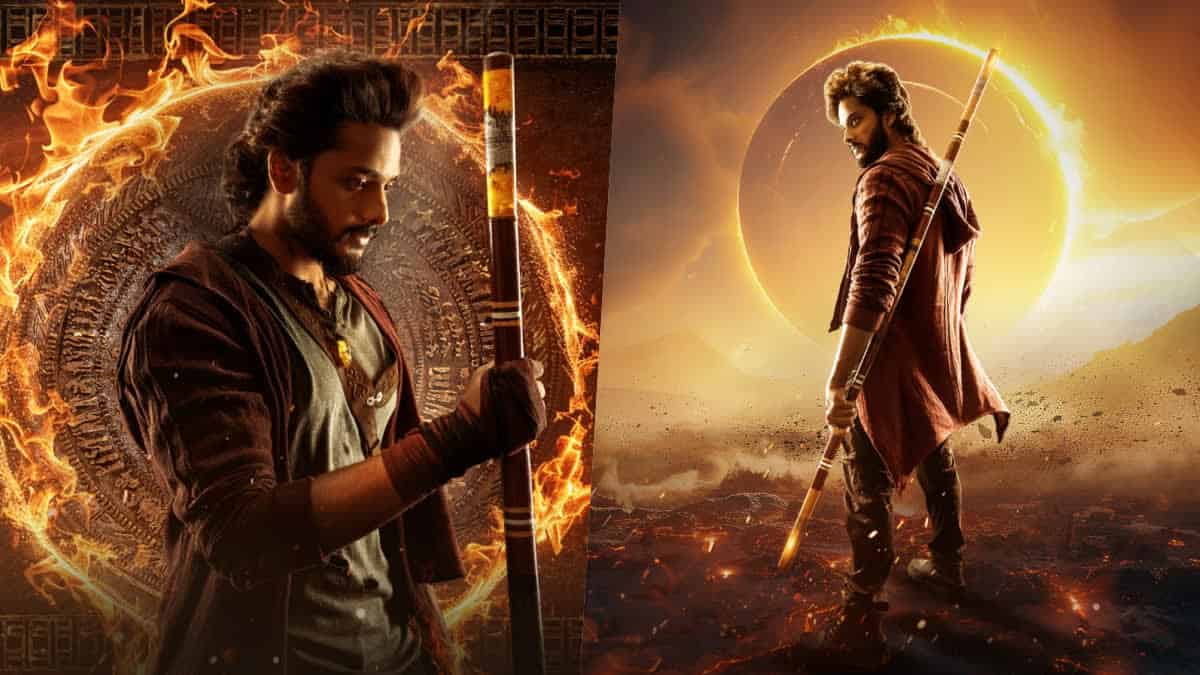Mirai Review
Mirai starts with the Kalinga Yudh sequence, and from the very first frame, the VFX leaves you stunned. The scale, the detail, and the intensity make it clear that this is not just a standard action scene. This is a sequence crafted with love and research. Prabhas’s narration in the opening adds gravitas, immediately grounding you in the story’s stakes and history.
Shriya Saran, as the pregnant woman, delivers a performance that is both natural and impactful. Her presence anchors the narrative, and even subtle expressions convey a lot. Teja Sajja’s introduction is fiery and visually striking, although the fight that accompanies it feels slightly forced. It is more a showcase of bravado than a story necessity. Yet, it establishes his character effectively.
The early introduction of mind-reading as a skill is clever and unusual, adding an extra layer of intrigue. The film shows that it isn’t afraid to play with unique concepts while keeping them believable within its mythological-science framework.
Story, Mythology, and Meaningful Fights
The narrative of Mirai moves from thousands of years ago to a present-day race against time. The transition is smooth, and the story is set up efficiently. Within the first thirty minutes, you understand the main arc, yet the film maintains suspense and intrigue through its layered backstories. Every subplot has a purpose, and the villain’s actions are swift and meaningful. He never drags the story down.
Where the film truly excels is in its integration of mythology. Unlike other movies that simply borrow elements from the Ramayana, Mirai weaves them into the narrative meaningfully. From the Sampaadi bird sequences to the portrayal of Mirai as a powerful weapon, each scene has a mythological resonance. Backstories are not filler. They enrich the plot and make each character’s motivations clear.
Fights in the movie are not mere spectacle; every combat sequence serves a purpose. The unique fight between the villain and the yodha is a highlight because it subverts expectations.
Meanwhile, the comedy scenes are carefully planted. They offer levity without disrupting the narrative flow. Even minor historical details, like the depiction of the Kumbh Mela, feel authentic and elevate the world-building.
Visuals, Execution, and World-Building
Visually, Mirai is a feast. The VFX is Hollywood-level, sometimes even surpassing it, and this alone makes the film a standout. Camera work and lighting are consistently excellent. Every frame feels meticulously composed, from expansive historical sequences to intimate character moments.
Scenes like the reveal of Mirai as a weapon are beautifully conceived, making you feel the weight of its power. The use of Sanskrit dialogue and a carefully curated background score enhances authenticity and immerses the audience in a believable mythological world.
Minor Flaws
Despite its many strengths, Mirai has a few drawbacks. The runtime of 2 hours 49 minutes is a stretch. Some sequences could have been trimmed or sped up, as they slightly dilute the narrative momentum. Teja Sajja’s fight, while visually striking, could have been tighter. A few high-hype moments, like the villain acquiring the critical book, occur too quickly, slightly reducing their impact. There are occasional small drops in pacing.
Verdict
Mirai is ambitious, visually stunning, and mythologically rich. Strong performances and purposeful storytelling make it a memorable watch. It occasionally overstays its welcome, and a few sequences feel slightly overlong, but the film’s creativity makes it a rewarding experience.






Leave a Reply